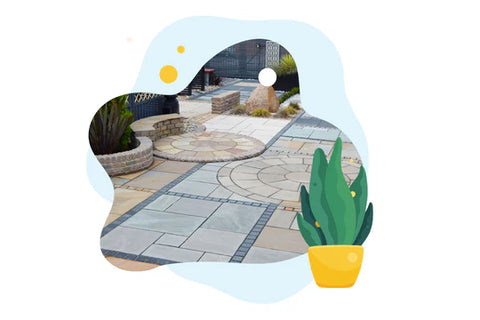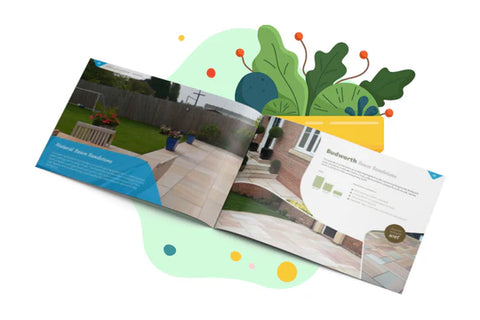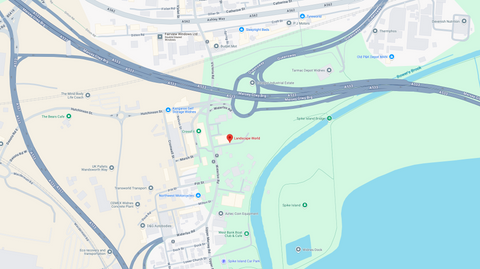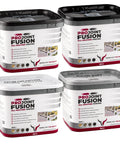
Paving slabs can get covered in dirt, grime, and other types of stains and build-ups that make them unsightly without regular maintenance and upkeep. Although they come in different materials from a variety of natural stones to porcelain, the general steps to getting them looking nice and clean are the same.
In this guide, we will cover a few simple methods you can use to clean and remove dirt/stains from your paving slabs. First, we will look at how to do it with just soap and water. Then we’ll go over how you can use household items such as bleach or vinegar. Finally, we’ll look at how you can use a pressure washer to get everything looking like-new again.
Tools and Items Needed:
Before we begin, let’s go over the basic tools, items, and resources you will need:
- Water (preferably warm water)
- A bucket
- A broom
- A brush with thick and hard bristles
- Soap, detergent, or some other cleaning agent (i.e. vinegar or bleach)
- A pressure washer, if you choose to use this method
Once you have everything gathered, you’re ready to begin. We will tackle each method in turn. Some steps will be similar but we will point out the benefits of each method along the way.
How to Clean Paving Slabs with Soap and Water
Some people want it the easy way, and this is it. All you need here is soap/detergent, a broom, a brush, and a bucket filled with warm water.
Renting or purchasing a pressure washer can be expensive for some and others may not want to use bleach for whatever reason, so this simple guide is for you.
Step 1: Remove Patio Furniture & Other Items Off the Paving Slabs
The first step is removing all the furniture and other items such as plants, toys, pet items, etc. from the area you wish to clean. Once the area is clear, you can move on to the next step.
Step 2: Remove Any Debris & Weeds from the Paving Slabs
Weeds find the tiniest cracks and spaces to take root, so you need to pull all of them out from between the slabs. However, depending on the severity of the weed infestation, you may need to resort to weed killer.
Next, take your garden broom and sweep off any top dirt and debris (such as sticks or leaves) from the area. Once the pavers have been swept and debris removed, you’re ready for step 3.
Step 3: Mix Warm Water and Soap in Your Bucket
Take out your soap – which can be liquid or powder crystals – and mix it with warm water in your bucket. You don’t need much, but add in enough that you see foam start to form when you start to mix.
Although there are special products you can find at your local shop, the same soap you use for your dishes will work just as well for this. But be sure there aren’t any acids or damaging ingredients inside your soap because it could have adverse effects when you clean patio slabs depending on their material.
Step 4: Pour Small Amounts of Your Soapy Water Over the Pavers
If you’re working on a large area, then it’s best to take this in parts so the water doesn’t dry up before you get to it. And also, you’ll want to experiment with a smaller area that’s not easily visible to ensure your mixture doesn’t damage the slabs.
Once you’re confident your solution is good to go, you’re ready for the fun part.
Step 5: Scrub, Scrub, and Scrub Some More
Now, you’re going to take your brush with thick bristles and start scrubbing as hard as you can – using some elbow grease and a brush with a long handle is the best way to clean patio slabs.
Doing this regularly has many benefits such as keeping your patio looking good and lessening the number of weeds that will grow.
Step 6: Rinse with Fresh, Clean Water
Once you’ve thoroughly scrubbed the patio, the final step is taking clean water and rinsing everything off. You’ll notice a stark difference once all the dirty soap water is removed. If you have a water hose, it will make it a lot easier to get it cleared off. But if not, empty and rinse out your bucket and refill it with clean water and use that.
How to Clean Garden Slabs with Bleach or Vinegar
As mentioned earlier, a lot of the steps are the same so we won’t repeat them here. However, if you want to use bleach or vinegar, you need to be aware of the mixture and their drawbacks.
With bleach, you want it to be a 5:1 (water:bleach) mixture and only use it on natural paving slabs such as stone. It will damage porcelain and other man-made materials. Also, remember to wear protective clothing so the bleach doesn’t damage your skin.
For vinegar, it has to be white vinegar and the ratio is 50/50. You only need to worry about any plants you may have in the area as the acid can damage them. You simply need to replace either mixture with the third step above and the rest will be the same.
How to Clean Patio with a Pressure Washer
Since a pressure washer takes a lot of hard work out of the equation, we’ll give a brief step-by-step process to use one to clean patio slabs.
Step 1: Sweep the Patio and Remove Weeds
This is the only similar step, so please refer above for details.
Step 2: Hook Up Your Washer to your Hose Bibb
This is so enough is coming through the water pressure so it works properly.
Step 3: Add Soap to the Water Pressure or the Pavers
If your water pressure allows you to do so, add your soap or detergent here. If not, simply apply it over the patio area.
Step 4: Set Your Water Pressure to “Medium”
Pressure waters produce a lot of force, so set it to medium to avoid overdoing it. Keep the nozzle at a 45-degree angle and move it left to right and front to back to ensure everything is even.
Step 5: You’re Done
You can disconnect the pressure washer from the water valve and ensure you clear the rest of the water out by holding down the trigger. And voila, your patio slabs will look nice and clean.
Need more assistance or want to install new patio slabs? Be sure to check our range of paving slabs, block paving, porcelain paving and concrete paving at Landscaping World.








